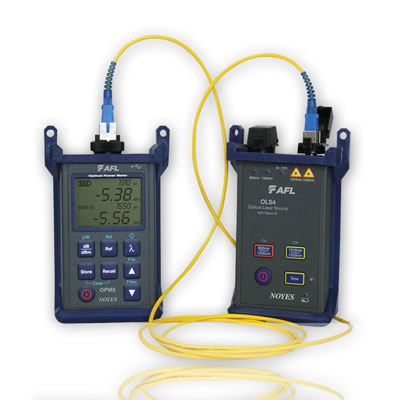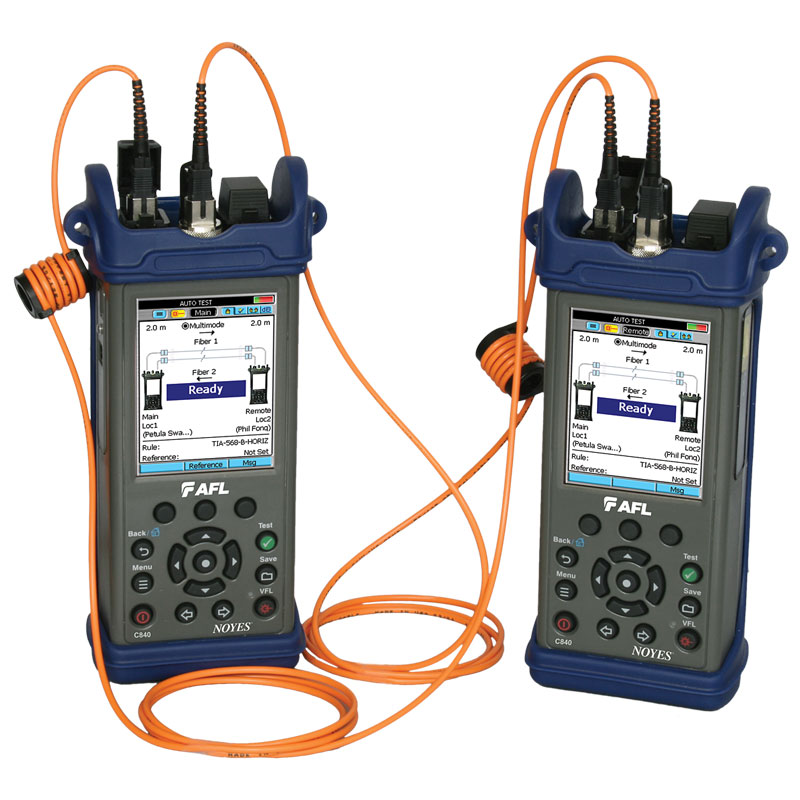Unveiling the Secret Utilizes of Optical Fibre Evaluating for Effective Information Transmission
In the world of modern-day communication, optical fiber screening becomes a crucial technique for optimizing data transmission. By employing methodologies such as Optical Time Domain Reflectometry (OTDR) and insertion loss assessments, network operators can efficiently identify and attend to problems that may jeopardize signal stability. As the demand for faster and a lot more trusted links remains to rise, the implications of these testing techniques extend past instant fault detection, influencing long-term network efficiency. Recognizing the complex applications of optical fiber testing invites a deeper exploration into its crucial duty fit the future of information communication.

Relevance of Optical Fibre Screening
The relevance of optical fiber testing can not be overemphasized, as it serves as a critical part in making sure the reliability and performance of data transmission systems. In a period where high-speed communication is paramount, any kind of deficiencies in fiber optics can lead to substantial data loss and lowered performance. Therefore, strenuous testing procedures are necessary to confirm the stability and efficiency of optical cable televisions.
Checking enables the identification of defects such as micro-bends, macrobends, and splice losses that could hinder signal high quality. It provides understandings into the overall attenuation and bandwidth capabilities of the fiber, making certain that the network fulfills specific operational criteria. Normal screening not only enhances system efficiency yet additionally lengthens the life expectancy of the facilities by determining potential concerns prior to they intensify into costly failings.

Kinds of Optical Fiber Examinations
Various types of optical fiber tests are carried out to ensure the efficiency and integrity of fibre optic networks. These tests can be classified into a number of key types, each offering a particular objective in evaluating the honesty of the fibre.
First, Optical Time Domain Reflectometry (OTDR) is a famous examination that identifies mistakes, interlaces, and connectors within the fiber. By sending out pulses of light and analyzing the shown signals, specialists can determine concerns along the fiber's length.
Second, insertion loss examinations evaluate the amount of signal loss when light travel through adapters or splices, which is essential for preserving network effectiveness.
Third, return loss examinations gauge the quantity of light showed back in the direction of the resource, supplying understandings right into the quality of connections and prospective sources of disturbance.
In addition, read review connection examinations ensure that the fibre path is total, enabling professionals to confirm that the fiber is intact with no breaks. optical fibre diameter analyser.
Lastly, visual mistake locators use noticeable light to identify breaks or extreme bends in the fibre, aiding in quick troubleshooting. Collectively, these examinations create a comprehensive approach to preserving ideal performance in fibre optic networks.

Applications in Network Maintenance
In modern-day telecommunications, reliable network maintenance relies heavily on optical fibre screening to identify and correct issues quickly. Regular testing makes sure that the network runs at optimum performance levels, reducing downtime and boosting customer experience.
One of the main applications of optical fibre screening in upkeep is the detection of mistakes, such as breaks, flexes, or improper links. Strategies like Optical Time Domain Name Reflectometry (OTDR) enable service technicians to find these issues properly and examine the quality of the fiber link. Furthermore, loss testing validates the stability of the optical path, making certain that signal attenuation remains within appropriate limits.
Regular maintenance screening likewise aids in safety nets, recognizing prospective problems prior to they rise into substantial failures. This aggressive approach can conserve organizations both time and monetary resources. Throughout upgrades or expansions, optical fibre screening ensures that new installments integrate perfectly with existing framework.
Enhancing Data Transmission Dependability
Reliable network maintenance with optical fiber testing not only addresses instant issues however likewise plays a significant role in improving information transmission reliability. By recognizing faults, determining signal loss, and analyzing the overall condition of fibre optic cords, screening ensures that potential issues are fixed prior to they escalate into considerable interruptions.
Routine optical fiber screening, such as time-domain reflectometry (TDR) and optical time-domain reflectometry (OTDR), permits service technicians to determine the specific areas of breaks, flexes, or adapter concerns within the network. This proactive approach not only reduces downtime however additionally maximizes the efficiency of information transmission by making certain that the paths for signals are clear and operating successfully.
In addition, screening aids in Related Site confirming adherence to industry standards and specifications, which is important for preserving the honesty of data flow. By guaranteeing that each connection meets called for limits for loss and top quality, companies can reinforce their confidence in the reliability of their data networks.
Inevitably, buying thorough optical fiber testing not only boosts information transmission dependability but also sustains the lasting operational efficiency of interaction facilities.
Future Trends in Fiber Screening
Emerging technologies are positioned to reinvent fibre screening, leading the means for enhanced efficiency and precision in data transmission diagnostics (optical fibre diameter analyser). As the demand for faster web and higher bandwidth remains to climb, the assimilation of sophisticated tools such as man-made intelligence (AI) and artificial intelligence (ML) is set to from this source change conventional fiber testing approaches. These innovations will certainly allow anticipating maintenance and automated mistake detection, dramatically decreasing downtime and boosting network reliability
In addition, the adoption of Web of Things (IoT) gadgets will certainly help with real-time surveillance of fibre networks, permitting prompt identification of efficiency concerns. This shift in the direction of aggressive administration will certainly minimize interruptions and maximize data flow.
In addition, developments in optical time-domain reflectometry (OTDR) and brand-new screening standards will enhance the precision of measurements, making certain that information integrity is preserved throughout the transmission procedure. The arrival of 5G modern technology also requires the growth of extra innovative fiber testing strategies to sustain its high-speed requirements.
Final Thought
In verdict, optical fiber testing is important for maintaining efficient information transmission within interaction networks. Routine testing not just makes sure compliance with industry criteria yet likewise helps with proactive upkeep, inevitably contributing to the long-term integrity and efficiency of fibre optic systems.